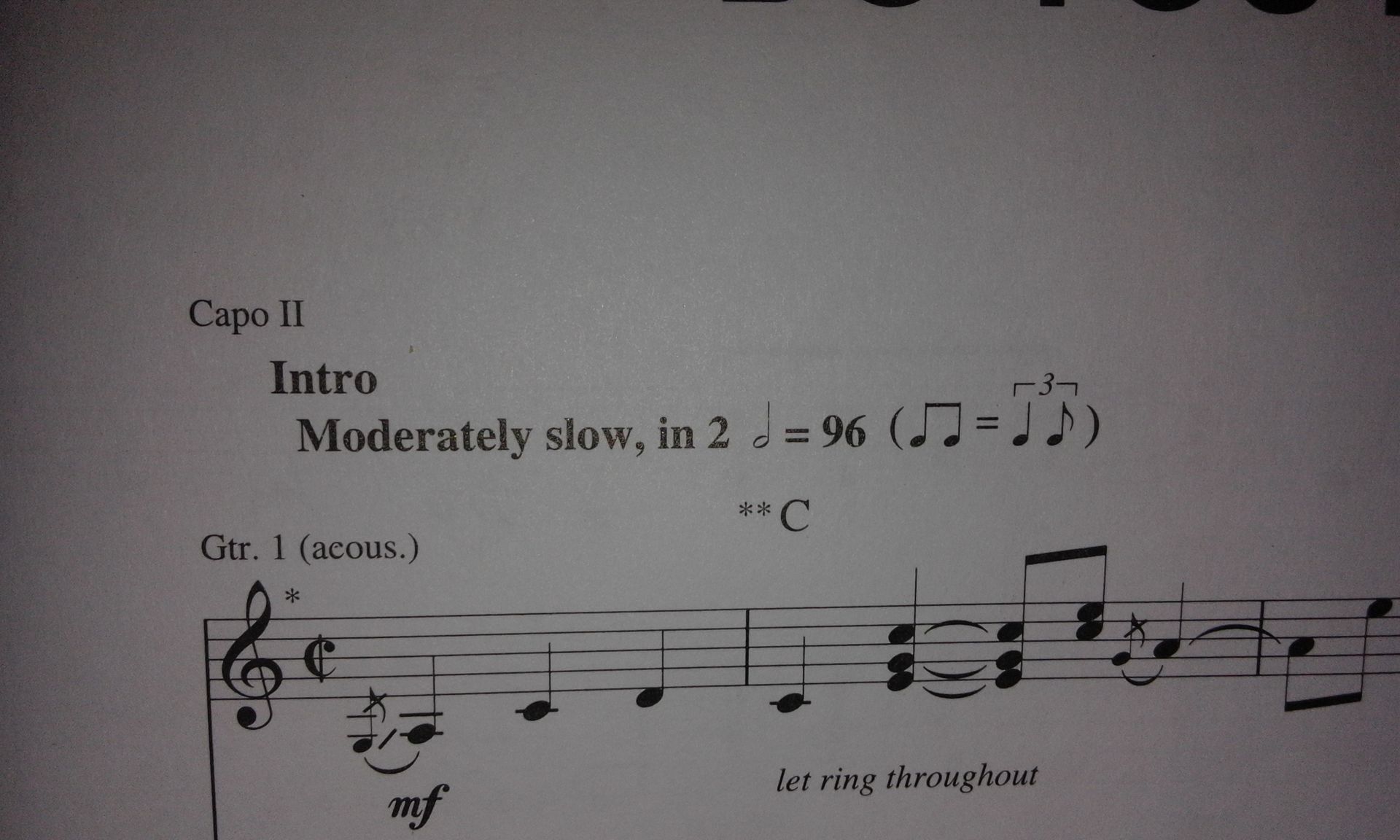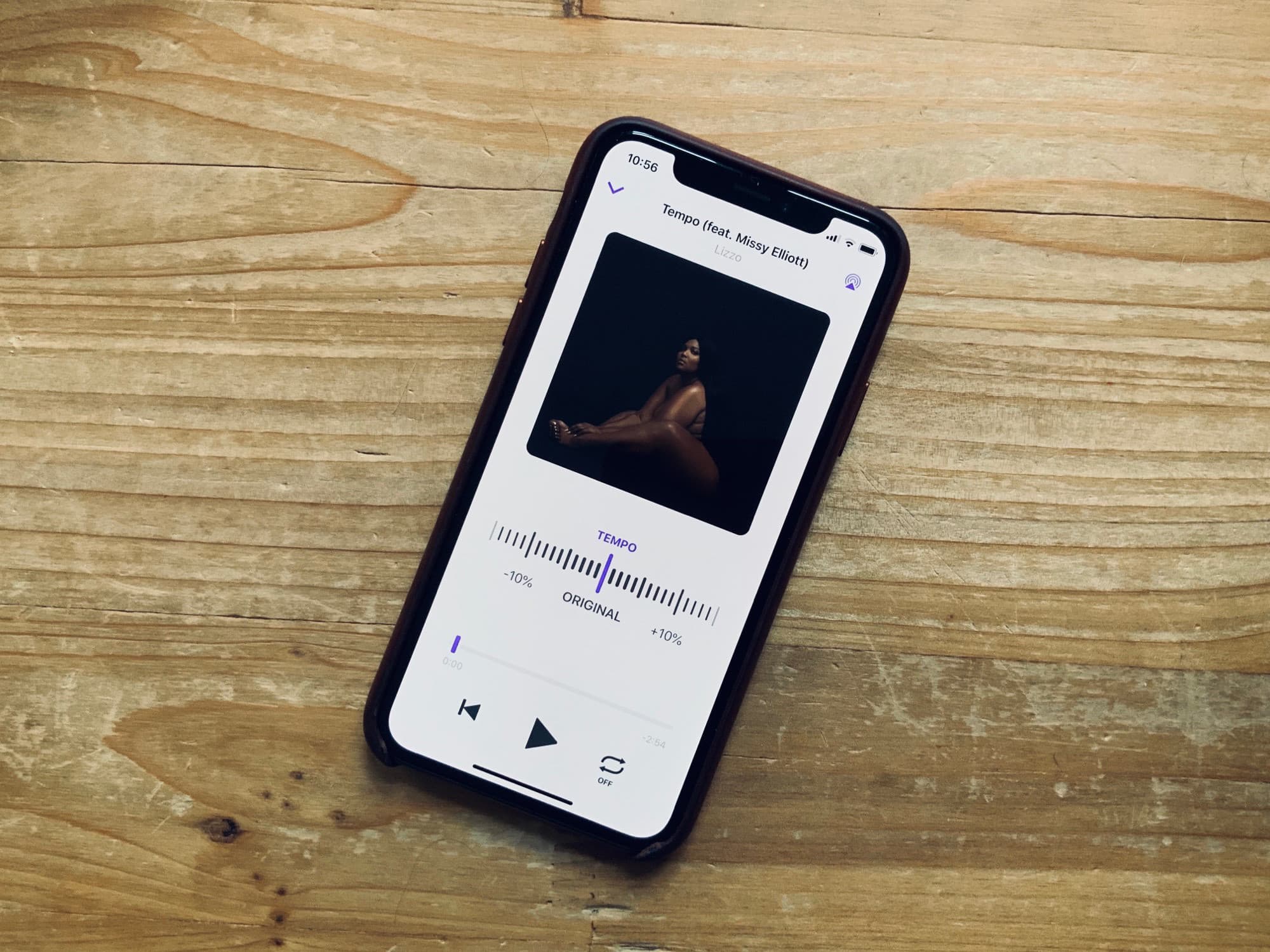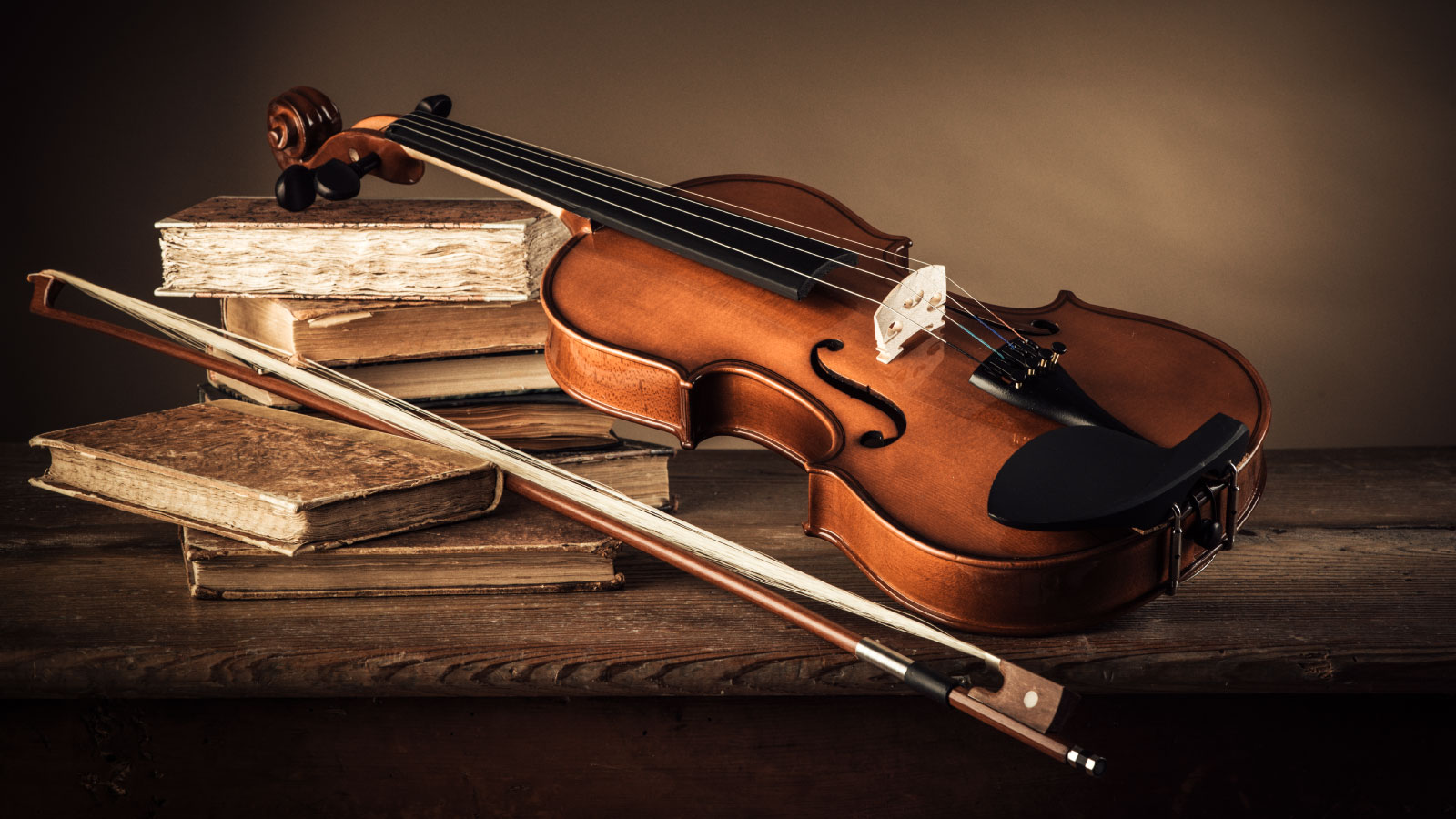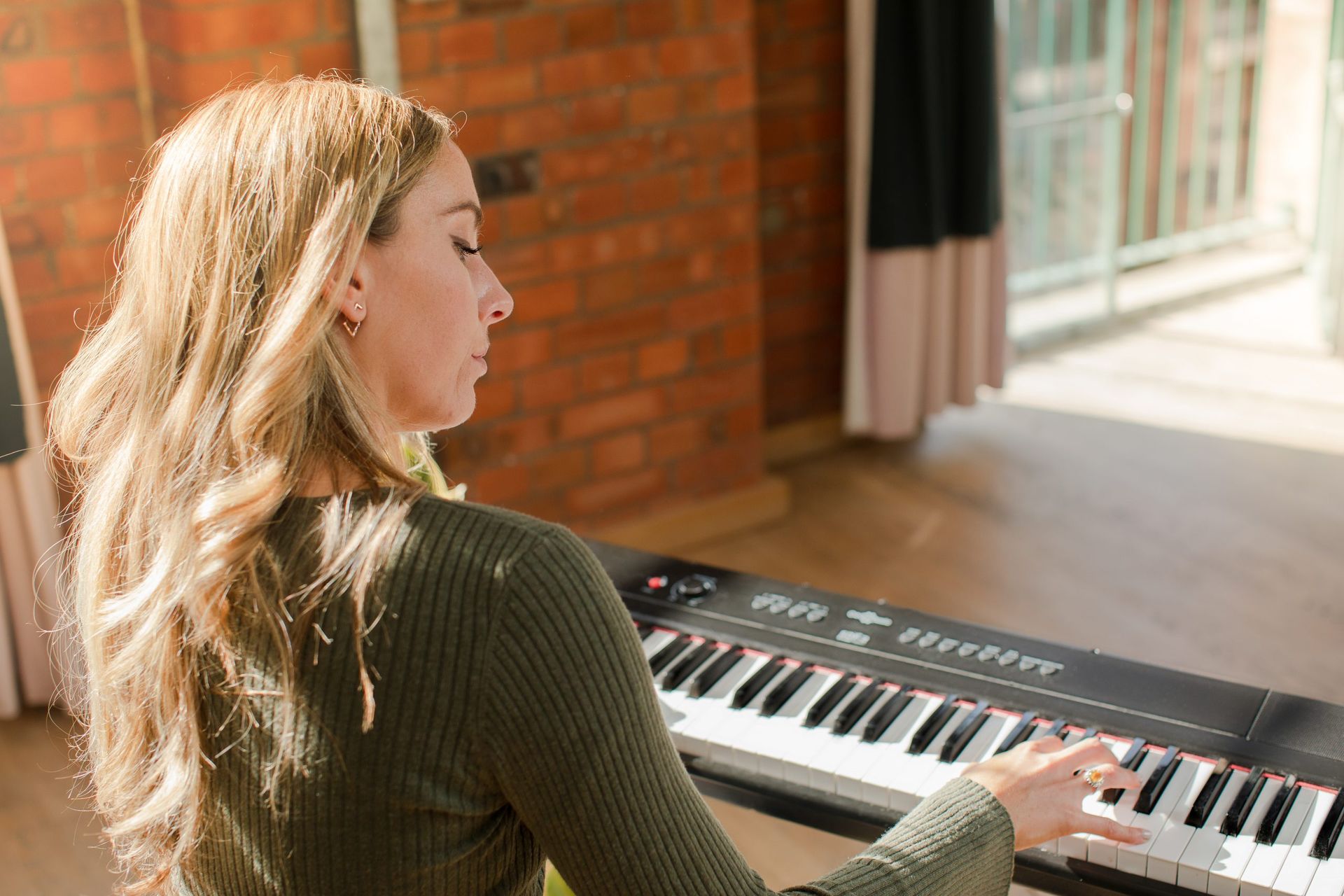Home>Production & Technology>Tempo>What Indicates A Moderate Tempo In Music


Tempo
What Indicates A Moderate Tempo In Music
Published: December 10, 2023
Discover what indicates a moderate tempo in music and how it impacts the rhythm and atmosphere of a musical composition. Explore the significance of tempo in creating the desired mood and expression.
(Many of the links in this article redirect to a specific reviewed product. Your purchase of these products through affiliate links helps to generate commission for AudioLover.com, at no extra cost. Learn more)
Table of Contents
Introduction
Music has the incredible power to evoke emotions, set the mood, and captivate our souls. But have you ever wondered what makes a song feel just right? One of the key elements that contribute to the overall feel and atmosphere of a piece of music is its tempo.
Tempo refers to the speed or pace at which a musical composition is played. It acts as a guiding force, determining the rhythm, energy, and flow of a song. From slow, melancholic ballads to fast-paced, energetic anthems, tempo plays a crucial role in shaping the musical experience.
One of the popular tempo ranges that often strikes a harmonious balance between calm and excitement is the moderate tempo. In this article, we will explore what constitutes a moderate tempo in music, its characteristics, and why it is significant in creating memorable musical compositions.
So, whether you’re a musician, a music enthusiast, or just someone curious about the inner workings of music, join us on this journey to discover the world of moderate tempo in music.
Definition of Tempo in Music
In the realm of music, tempo refers to the speed or rate at which a piece of music is performed or played. It determines the pace, rhythm, and overall feel of a composition. Tempo is typically measured in beats per minute (BPM) and serves as a crucial element in conveying the desired mood and emotion of a musical piece.
Tempo acts as a fundamental building block of music, providing structure and coherence. It influences the perception of time and creates a sense of movement and progression within a composition. In simple terms, tempo can be regarded as the heartbeat of a song, guiding and dictating the pace at which the music unfolds.
From slow and solemn tempos such as Adagio, Lento, or Grave, to fast and lively tempos like Allegro, Vivace, or Presto, there is a wide range of tempo indications that allow composers and musicians to express their musical intentions. And within this wide spectrum lies the realm of moderate tempo.
Moderate tempo can be described as a moderate speed, neither too fast nor too slow. It strikes a balance between the excitement of a quick tempo and the tranquility of a slow tempo. Finding the sweet spot in terms of tempo is essential for creating a seamless and enjoyable musical experience that resonates with the listeners.
Now that we have established a basic understanding of tempo in music, let’s dive deeper into the characteristics and significance of moderate tempo in creating captivating musical compositions.
Understanding Moderate Tempo
Moderate tempo, as the name suggests, refers to a moderate speed of music that falls between the extremes of fast and slow tempos. It is a tempo range that strikes a balance between energy and tranquility, creating a comfortable and pleasing listening experience.
While the exact numerical value of moderate tempo may vary depending on the musical context, it generally falls within the range of 80-120 beats per minute (BPM). This tempo range allows the music to flow naturally, providing a sense of forward momentum without feeling rushed or overwhelming.
What sets moderate tempo apart from other tempos is its versatility. It can be used in various musical genres, from pop and rock to jazz and classical. The moderate tempo allows for expressive melodies and rhythmic patterns to be more accessible, making it easier for listeners to engage with the music.
One of the benefits of moderate tempo is its ability to create a balanced emotional landscape. It captures the essence of both serenity and vitality, intertwining them to create a pleasant and captivating musical experience. The moderate pace allows for a deeper exploration of melodic nuances and intricate musical details, while still maintaining a steady groove that keeps the listeners engaged.
Moreover, moderate tempo provides a sense of stability and comfort, making it an ideal choice for creating catchy hooks and memorable choruses. It allows the lyrics and vocals to shine, enabling the listeners to connect with the message and emotions conveyed by the artist.
Understanding and utilizing moderate tempo effectively requires a keen sense of musicality and an understanding of how different musical elements interact. The arrangement, instrumentation, and production choices play a vital role in enhancing the impact of the moderate tempo, allowing the music to reach its full potential.
Now that we have explored the concept of moderate tempo, let’s delve into the characteristics that define this tempo range and its significance in the realm of music.
Characteristics of Moderate Tempo
Moderate tempo has distinct characteristics that set it apart from other tempos, lending a specific vibe and feel to the music. Understanding these characteristics can help musicians and listeners appreciate the unique qualities and potential of moderate tempo compositions.
1. Balance: Moderate tempo strikes a delicate balance between energy and relaxation. It offers a moderate pace that allows for rhythmic and melodic intricacies to shine while still maintaining a sense of stability and control. This balance creates a pleasant and enjoyable listening experience.
2. Groove: Moderate tempo often has a steady and infectious groove that gets people tapping their feet or nodding their heads along to the beat. It provides a comfortable and accessible rhythm that keeps the music engaging and danceable without being overly high-paced.
3. Expressiveness: The moderate tempo range allows for greater expressiveness in melodic lines and vocals. It provides enough breathing space for singers to deliver emotive and heartfelt performances, enabling the lyrics and melodies to be fully conveyed and appreciated by the listeners.
4. Melodic Nuances: Moderate tempo allows for intricate melodic nuances to be explored and appreciated. With a slower pace compared to fast tempos, moderate tempo compositions often have more room for embellishments, variations, and subtle melodic twists, adding depth and complexity to the music.
5. Catchiness: Moderate tempo has the ability to create catchy and memorable melodies and hooks. The balanced speed and rhythmic stability make it easier for listeners to latch onto the melodic elements and sing along, making the music more relatable and enjoyable.
6. Versatility: The moderate tempo range is versatile and adaptable to different genres and musical styles. It can be found in pop, rock, jazz, classical, and various other genres, showcasing its universal appeal and adaptability to different artistic visions.
These characteristics make moderate tempo an essential tool for musicians and composers to create engaging and accessible music that resonates with a wide audience. Its balance, groove, expressiveness, melodic nuances, catchiness, and versatility contribute to the overall musical experience and enrich the sonic landscape.
Now that we have explored the characteristics of moderate tempo, let’s move on to exploring some examples of songs that showcase this tempo range.
Examples of Songs with Moderate Tempo
There are countless songs across various genres that showcase the beauty and versatility of moderate tempo. These songs demonstrate how the moderate tempo range can create captivating and memorable musical experiences. Here are a few notable examples:
- “Hotel California” by Eagles: This classic rock anthem features a moderate tempo that perfectly captures the mysterious and haunting vibe of the lyrics. The steady groove, melodic guitar solos, and mesmerizing vocal harmonies make it an iconic representation of moderate tempo in rock music.
- “Rolling in the Deep” by Adele: Adele’s powerful and soulful voice shines in this moderate-tempo pop ballad. The steady beat, emotive melodies, and heartfelt lyrics come together to create a captivating and emotionally charged experience.
- “Fly Me to the Moon” by Frank Sinatra: This jazz standard showcases the timeless elegance and charm of moderate tempo. The smooth and swinging rhythm, coupled with Sinatra’s iconic vocals, make it a perfect example of how moderate tempo can create a relaxed yet captivating musical atmosphere.
- “Clocks” by Coldplay: With its infectious piano riff and steady beat, “Clocks” exemplifies the power of moderate tempo in alternative rock. The song’s evocative lyrics and soaring melodies resonate with listeners, showcasing the emotional depth and impact that can be achieved with this tempo range.
- “Unchained Melody” by The Righteous Brothers: This timeless ballad exemplifies the power of moderate tempo in delivering emotion and creating a sense of longing. The slow, steady pace allows the heartfelt vocals and poignant lyrics to shine, leaving a lasting impact on listeners.
These examples represent just a fraction of the countless songs that utilize moderate tempo to create a lasting musical impression. Each song showcases the unique characteristics and potential of this tempo range, further emphasizing its widespread usage and effectiveness in capturing the hearts of listeners.
Now that we have explored some examples of songs with moderate tempo, let’s delve into why moderate tempo is important in the realm of music.
Importance of Moderate Tempo in Music
Moderate tempo holds significant importance in the realm of music for several reasons. It plays a vital role in creating memorable and immersive musical experiences while providing a balanced and accessible listening environment. Here are some reasons why moderate tempo is essential:
1. Emotional Impact: Moderate tempo allows for a wide range of emotional expression. It provides a sweet spot between the calmness of slower tempos and the energy of faster tempos. This well-balanced tempo range allows musicians to evoke a variety of emotions, from introspection and tranquility to excitement and joy.
2. Musical Accessibility: Moderate tempo compositions are often more approachable and accessible to a wider audience. The steady and comfortable pace allows listeners to easily connect with the music, tap their feet along, or sing along to the melodies. This accessibility contributes to the popularity and longevity of many songs in this tempo range.
3. Catchiness and Memorability: Moderate tempo often lends itself well to creating catchy and memorable melodies. The balanced speed of the music allows for melodic hooks and choruses to be easily absorbed by listeners. This catchiness contributes to the longevity and radio-friendliness of many songs that fall within the moderate tempo range.
4. Musical Versatility: Moderate tempo is incredibly versatile and adaptable to various musical genres and styles. It can seamlessly fit into pop, rock, jazz, country, electronic, and many other genres, showcasing its flexibility as a tempo range. This versatility allows musicians to explore different genres while still maintaining a recognizable and enjoyable musical experience.
5. Groove and Danceability: Moderate tempo often has a steady groove that invites listeners to move and dance. The balanced rhythm creates a pocket for musicians to explore rhythmic patterns and syncopations, making it easier for listeners to tap their feet or sway to the music. This groove contributes to the overall enjoyment and engagement with the musical composition.
6. Musical Flow and Cohesion: Moderate tempo acts as a cohesive force within a composition. It provides a steady pulse that helps maintain the coherence and flow of the music. This evenness in tempo allows for seamless transitions between sections, creating a smooth and satisfying listening experience.
These aspects highlight the importance of moderate tempo in music. It caters to our emotional connection with music, makes it accessible and enjoyable to a wider audience, and allows for a versatile and memorable musical experience. Whether you’re a listener or a musician, moderate tempo holds a significant place in the world of music.
Now, let’s explore how to identify moderate tempo in different musical compositions.
How to Identify Moderate Tempo in Music
Identifying the tempo of a piece of music can be a valuable skill for musicians, music enthusiasts, and even casual listeners. While determining the exact tempo may require some musical knowledge or tools, there are a few key indicators that can help identify moderate tempo in music:
1. Listening to the Beat: Pay attention to the steady beat of the music. Moderate tempo will have a consistent and measured rhythm without feeling rushed or too slow. It should have a comfortable and relaxed pace, neither too fast nor too slow.
2. BPM Range: Consider the beats per minute (BPM) range of the music. Moderate tempo typically falls within the range of 80-120 BPM. This range allows for a balanced pace that is neither too fast nor too slow, creating a pleasant and engaging listening experience.
3. Musical Context: Take into account the musical genre and style. Different genres may have different conventions for what is considered moderate tempo. For example, a moderate tempo in classical music may be slower compared to a moderate tempo in pop or rock music. Familiarize yourself with the typical tempo ranges for the genre you are listening to.
4. Feeling and Energy: Consider the overall feeling and energy of the music. Moderate tempo often conveys a sense of balance, relaxation, and effortless flow. It should feel comfortable and pleasant, allowing the music to unfold naturally without feeling hurried or dragged.
5. Melodic and Rhythmic Complexity: Moderate tempo compositions often allow for intricate melodies and rhythmic patterns to shine. Listen for the presence of detailed melodic nuances, rhythmic variations, or syncopated rhythms. These elements can indicate a moderate tempo as they have more breathing space in this tempo range.
6. Professional Resources: Utilize online resources or music apps that provide tempo information. These tools can help identify the precise BPM of a song and determine if it falls within the moderate tempo range.
By considering these indicators and developing your ear for tempo, you can become adept at identifying moderate tempo in music. This skill allows for a deeper appreciation of the musical nuances and helps in understanding the artist’s intent and the emotional impact of the composition.
Now that we have explored how to identify moderate tempo, let’s conclude our exploration of this tempo range.
Conclusion
Tempo is a fundamental element in music that sets the pace and rhythm of a composition. Among the various tempo ranges, moderate tempo holds a special place. This balanced tempo range, typically falling between 80-120 BPM, offers a harmonious blend of energy and tranquility, creating a comfortable and captivating musical experience.
In this article, we have explored the definition and understanding of moderate tempo in music. We have examined its characteristics, such as balance, groove, expressiveness, melodic nuances, catchiness, and versatility. From iconic songs like “Hotel California” and “Rolling in the Deep” to timeless classics like “Fly Me to the Moon” and “Unchained Melody,” we have witnessed how moderate tempo plays a significant role in shaping and enhancing the musical landscape.
We have also highlighted the importance of moderate tempo in music. It allows for emotional expression, musical accessibility, catchiness, versatility, groove, and flow within compositions. Moderate tempo strikes a balance that appeals to a wide range of listeners and makes music more relatable and enjoyable.
Identifying moderate tempo in music can be achieved by listening to the beat, considering the BPM range, understanding musical context, feeling the energy, and recognizing melodic and rhythmic complexity. These indicators empower us to appreciate and connect with the tempo choices made by artists and composers.
In conclusion, moderate tempo is a vital tempo range that plays a significant role in creating memorable and immersive musical experiences. Its ability to balance emotion, accessibility, and musical flow makes it a versatile and essential element in a wide range of genres and styles. So, whether you’re tapping your feet to a catchy pop song or being moved by a heartfelt ballad, moderate tempo is there to guide and enhance the musical journey.











